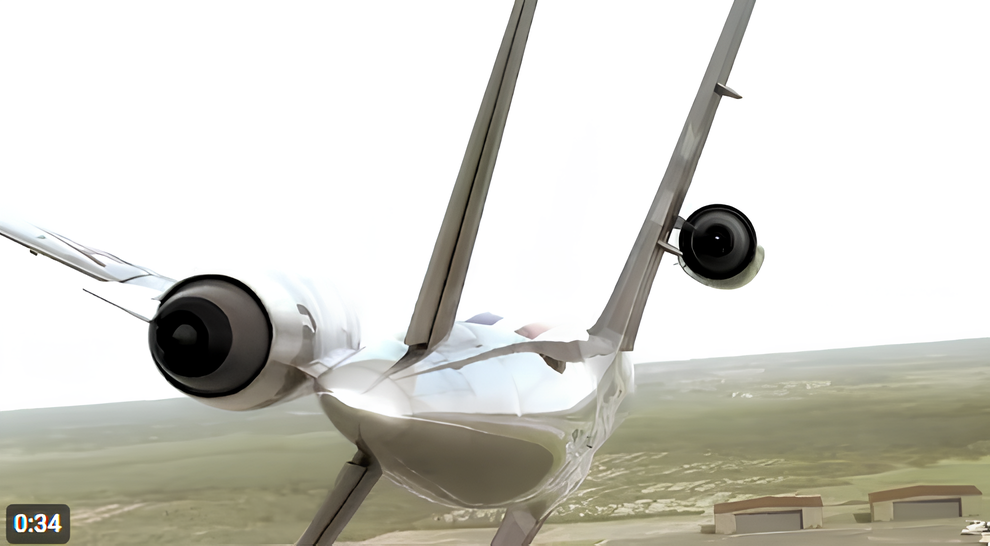American Airlines has long been a staple in the aviation industry, recognized not just for its extensive network of flights but also for its history and innovations. This article delves into the compelling journey of American Airlines, exploring its origins, significant milestones, and the innovative strides that have kept it at the forefront of air travel.
The Birth of American Airlines
American Airlines’ story begins in 1930, emerging from the amalgamation of more than 80 small airlines. Initially known as American Airways, the company rebranded to American Airlines in 1934. This rebranding marked a new era for the airline, setting the stage for its rise as a leader in the aviation sector.
Formation and Early Challenges
The consolidation of numerous small airlines into American Airways was a strategic move to create a more robust and competitive entity. However, managing such a diverse and widespread collection of companies posed significant operational challenges. Standardizing operations and integrating various regional services required innovative management strategies that laid the groundwork for future successes.
The Impact of the Rebranding
The transition from American Airways to American Airlines was not just a change of name but a pivotal shift in corporate identity and market positioning. This rebranding effort was accompanied by a renewed focus on customer service and operational efficiency. The new identity helped the airline establish itself as a trusted brand, synonymous with reliability and innovation in air travel.
Key Figures and Leadership
The early success of American Airlines can be attributed to visionary leaders who steered the company through its formative years. C.R. Smith, one of the most influential figures in the airline’s history, played a crucial role in shaping its strategic direction. His leadership during the initial years set a precedent for future leaders to continue driving the airline towards growth and innovation.
Early Innovations and Growth
In its early years, American Airlines made significant strides in aviation technology and passenger service. The airline was among the first to introduce sleeper service on its aircraft, enhancing passenger comfort on long-haul flights. This innovation laid the groundwork for future advancements in in-flight services.
Pioneering In-Flight Comfort
The introduction of sleeper services was a game-changer for long-haul travel, offering passengers unprecedented comfort during extended flights. This innovation was part of a broader strategy to differentiate American Airlines from its competitors by focusing on passenger experience. By prioritizing comfort, the airline set new standards that would influence the industry for decades.
Fleet Expansion and Route Development
During the 1940s and 1950s, American Airlines expanded its fleet and routes significantly, establishing itself as a dominant force in the industry. The acquisition of advanced aircraft like the Douglas DC-3 marked a turning point, allowing for more efficient and comfortable travel. This period of growth saw the airline extending its reach across the United States and beyond, laying the foundation for its future international expansion.
Establishing Operational Excellence
As American Airlines grew, so did its commitment to operational excellence. The airline invested heavily in training programs for pilots and crew to ensure high standards of safety and service. These initiatives helped American Airlines build a reputation for reliability and efficiency, critical factors in its sustained growth and customer loyalty.
The Jet Age and Beyond
The dawn of the jet age in the 1960s was a transformative period for American Airlines. The introduction of jet aircraft like the Boeing 707 allowed for faster, more efficient flights, making air travel accessible to a broader audience. This era also marked the beginning of American Airlines’ international expansion, as the airline established routes to Europe and beyond.
Revolutionizing Air Travel
The transition to jet aircraft was a revolutionary step that dramatically changed the dynamics of air travel. Jets like the Boeing 707 offered faster speeds and higher altitudes, reducing travel time and increasing passenger capacity. This transformation made air travel more appealing to a broader segment of the population, fueling an era of unprecedented growth for the airline.
Expanding Internationally
With the capabilities of jet aircraft, American Airlines embarked on an ambitious international expansion strategy. The airline opened new routes to Europe, South America, and Asia, tapping into emerging markets and establishing a global presence. This expansion was crucial in positioning American Airlines as a leading international carrier, capable of connecting passengers across continents.
Adapting to New Technologies
The jet age also brought about advancements in aviation technology that American Airlines was quick to adopt. From improved navigation systems to enhanced safety features, the airline invested in the latest innovations to ensure efficient and secure operations. This commitment to technological advancement enabled American Airlines to maintain its competitive edge in a rapidly evolving industry.
Technological Advancements
American Airlines has consistently been at the forefront of technological innovations in the aviation industry. In the 1980s, the airline introduced SABRE, a computerized reservation system that revolutionized the way flights were booked. This system not only enhanced operational efficiency but also improved the customer experience by simplifying the booking process.
The Impact of SABRE
The introduction of the SABRE system was a milestone in the history of American Airlines and the aviation industry as a whole. This computerized reservation system streamlined the booking process, reducing wait times and improving accuracy. It allowed travel agents and customers to access real-time flight information, revolutionizing the way air travel was managed and booked.
Embracing the Digital Revolution
As technology continued to evolve, American Airlines embraced the digital revolution by developing mobile apps and online platforms. These tools empowered passengers to manage their travel plans more conveniently, from booking flights to checking in and accessing boarding passes. This shift towards digitalization enhanced customer satisfaction and set a new standard for airline services.
Investing in Operational Technology
Beyond customer-facing innovations, American Airlines also invested in technology to optimize its operations. From advanced maintenance systems to sophisticated scheduling software, these investments improved efficiency and reduced costs. By integrating technology into its core operations, the airline enhanced its ability to deliver reliable and timely services to its customers.
American Airlines Today
Today, American Airlines is one of the largest airlines in the world, with an extensive network of domestic and international flights. The airline operates out of major hubs across the United States, including Dallas/Fort Worth, Charlotte, and Chicago O’Hare, connecting passengers to destinations across the globe.
Dominating the Domestic Market
American Airlines has a strong presence in the domestic market, offering an extensive network of flights across the United States. The airline’s major hubs facilitate efficient connections, making it a convenient choice for domestic travelers. This dominance in the domestic market provides a solid foundation for the airline’s international operations and contributes significantly to its overall growth.
International Connectivity
With a comprehensive network of international routes, American Airlines connects passengers to key destinations worldwide. The airline’s strategic partnerships and alliances further enhance its global reach, providing customers with seamless travel experiences. This international connectivity is a testament to American Airlines’ commitment to offering diverse travel options to its passengers.
Adapting to Market Trends
American Airlines continuously monitors market trends and adapts its strategies to meet evolving passenger needs. Whether through expanding its fleet, introducing new routes, or enhancing in-flight services, the airline remains responsive to changes in the industry. This adaptability is crucial in maintaining its competitive edge and ensuring long-term success.
Commitment to Sustainability
In recent years, American Airlines has made significant efforts to reduce its environmental impact. The airline has invested in more fuel-efficient aircraft and is actively exploring the use of sustainable aviation fuels. These initiatives reflect American Airlines’ commitment to sustainability and its role in shaping the future of air travel.
Fuel Efficiency and Fleet Modernization
American Airlines is committed to reducing its carbon footprint through fleet modernization and fuel efficiency initiatives. By investing in new, more efficient aircraft, the airline reduces fuel consumption and emissions. This commitment to environmental responsibility is a crucial part of its sustainability strategy, aligning with global efforts to combat climate change.
Exploring Sustainable Aviation Fuels
The airline is actively exploring the use of sustainable aviation fuels (SAF) as part of its sustainability initiatives. SAFs offer a lower-carbon alternative to traditional jet fuels, helping to reduce the environmental impact of air travel. By investing in SAF research and development, American Airlines is contributing to the industry’s transition towards more sustainable practices.
Collaborating for a Greener Future
American Airlines collaborates with industry partners, government agencies, and environmental organizations to advance sustainability efforts. These collaborations enable the airline to share knowledge, resources, and best practices, accelerating progress towards a more sustainable future. By working together, American Airlines and its partners aim to drive meaningful change in the aviation industry.
Innovations in Customer Experience
American Airlines continues to enhance the customer experience through various innovations. From introducing premium economy seating to offering high-speed Wi-Fi on its flights, the airline strives to meet the evolving needs of its passengers.
Premium Economy and Enhanced Seating Options
The introduction of premium economy seating reflects American Airlines’ commitment to offering diverse travel experiences. This cabin class provides passengers with additional comfort and amenities, catering to those seeking an elevated travel experience. By expanding its seating options, the airline enhances customer satisfaction and attracts a broader range of travelers.
Connectivity and In-Flight Entertainment
High-speed Wi-Fi and an array of in-flight entertainment options are now standard on American Airlines flights. These services ensure that passengers remain connected and entertained throughout their journey. By investing in connectivity and entertainment, the airline enhances the overall travel experience, making it more enjoyable and convenient for passengers.
Personalized Travel Services
American Airlines leverages technology to offer personalized travel services that cater to individual passenger preferences. From customized meal options to tailored travel itineraries, these services enhance convenience and satisfaction. By focusing on personalization, the airline strengthens its relationship with customers, fostering loyalty and repeat business.
Loyalty Programs and the American Airlines Credit Union
The AAdvantage loyalty program is one of the most recognized frequent flyer programs in the world. It offers members a range of benefits, including flight upgrades, priority boarding, and access to exclusive lounges. Additionally, the American Airlines Credit Union provides financial services to employees and their families, further enhancing the airline’s commitment to its workforce.
The AAdvantage Program
The AAdvantage program rewards loyal customers with points that can be redeemed for flights, upgrades, and other travel-related benefits. This program is designed to enhance customer retention by offering valuable incentives for repeat business. The comprehensive range of benefits makes AAdvantage a popular choice among frequent flyers, contributing to the airline’s success.
Exclusive Lounge Access
Members of the AAdvantage program enjoy access to exclusive lounges at airports worldwide. These lounges provide a comfortable and relaxing environment for passengers to unwind before their flights. The availability of such premium facilities enhances the travel experience and underscores American Airlines’ commitment to customer satisfaction.
Supporting Employees Through Financial Services
The American Airlines Credit Union offers a variety of financial services to employees and their families. From savings accounts to loan products, these services provide valuable support to the airline’s workforce. By investing in the financial well-being of its employees, American Airlines demonstrates its dedication to fostering a supportive and engaged work environment.
Challenges and Resilience
Like many airlines, American Airlines has faced its share of challenges, from economic downturns to the impact of global events like the COVID-19 pandemic. However, the airline’s resilience and ability to adapt have enabled it to navigate these obstacles and continue to thrive.
Economic Downturns and Recovery
Economic downturns pose significant challenges for airlines, affecting travel demand and revenue. American Airlines has demonstrated resilience by implementing strategic cost-cutting measures and optimizing operations during tough economic times. These strategies have enabled the airline to recover and emerge stronger in the face of financial adversity.
Navigating the Pandemic
The COVID-19 pandemic posed unprecedented challenges for the aviation industry. American Airlines responded by implementing stringent health and safety measures, adjusting its flight schedules, and leveraging technology to ensure passenger safety and confidence. These actions were crucial in maintaining operations and rebuilding passenger trust during the crisis.
Strategic Adaptation and Innovation
American Airlines has a history of adapting to changing circumstances through strategic innovation and forward-thinking. Whether through technological advancements, operational adjustments, or customer-focused initiatives, the airline consistently finds ways to overcome obstacles. This adaptability is a testament to its resilience and commitment to long-term success.
The Future of American Airlines
Looking ahead, American Airlines is poised to continue its legacy of innovation and leadership in the aviation industry. The airline’s focus on sustainability, technological advancements, and customer service will play a crucial role in shaping its future.
Embracing Change and Innovation
As the aviation landscape evolves, American Airlines remains committed to embracing change and exploring new opportunities. Whether through expanding its route network, enhancing its fleet, or investing in cutting-edge technology, the airline is dedicated to providing a superior travel experience for its passengers. This proactive approach ensures that American Airlines remains at the forefront of industry innovation.
Commitment to Environmental Responsibility
Sustainability will continue to be a key focus for American Airlines as it strives to reduce its environmental impact. The airline plans to further invest in sustainable practices, from fleet modernization to the use of alternative fuels. By prioritizing environmental responsibility, American Airlines aims to lead the industry in creating a more sustainable future.
Enhancing the Customer Journey
American Airlines is dedicated to enhancing the customer journey by continually improving its services and offerings. From personalized travel experiences to seamless digital platforms, the airline seeks to exceed passenger expectations at every touchpoint. By focusing on customer satisfaction, American Airlines strengthens its position as a preferred choice for travelers worldwide.
Conclusion
American Airlines’ journey from its humble beginnings to its status as a global aviation leader is a testament to its commitment to innovation, customer service, and resilience. As the airline continues to evolve, it remains focused on delivering excellence in air travel and shaping the future of the industry.
For travelers and aviation enthusiasts alike, American Airlines represents more than just a means of transportation; it embodies a rich history of progress and a promising future filled with exciting possibilities. The airline’s dedication to sustainability, technological advancement, and customer experience ensures that it will continue to be a leader in the aviation industry for years to come.



